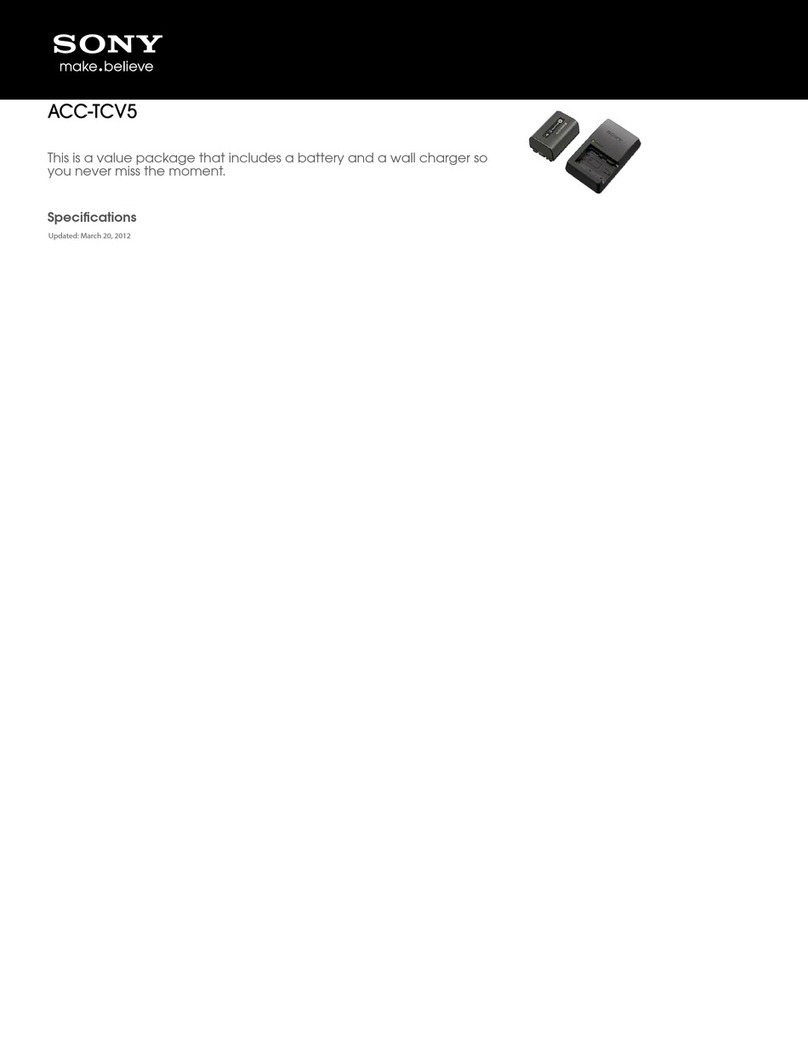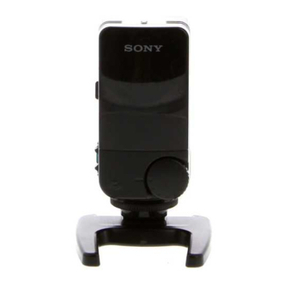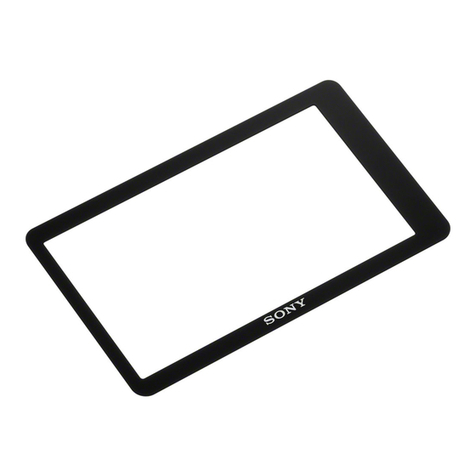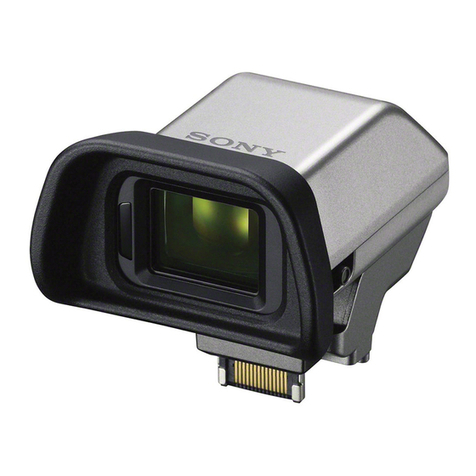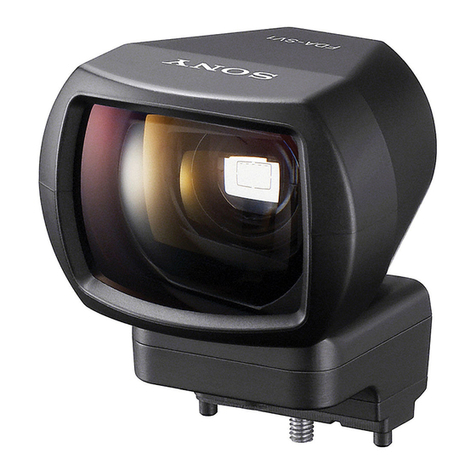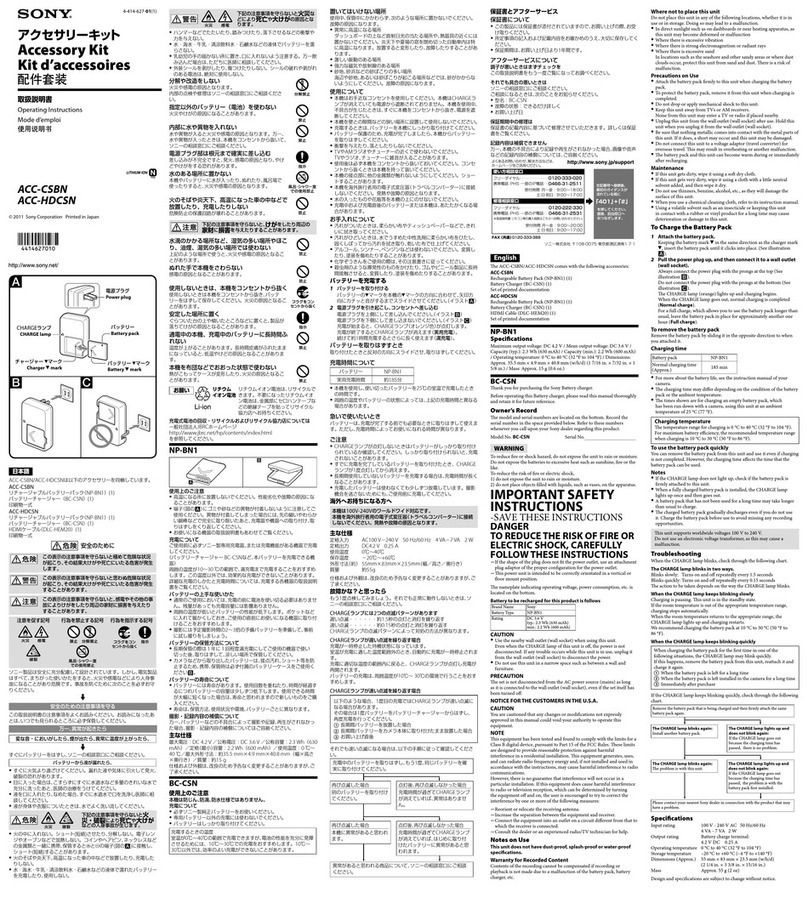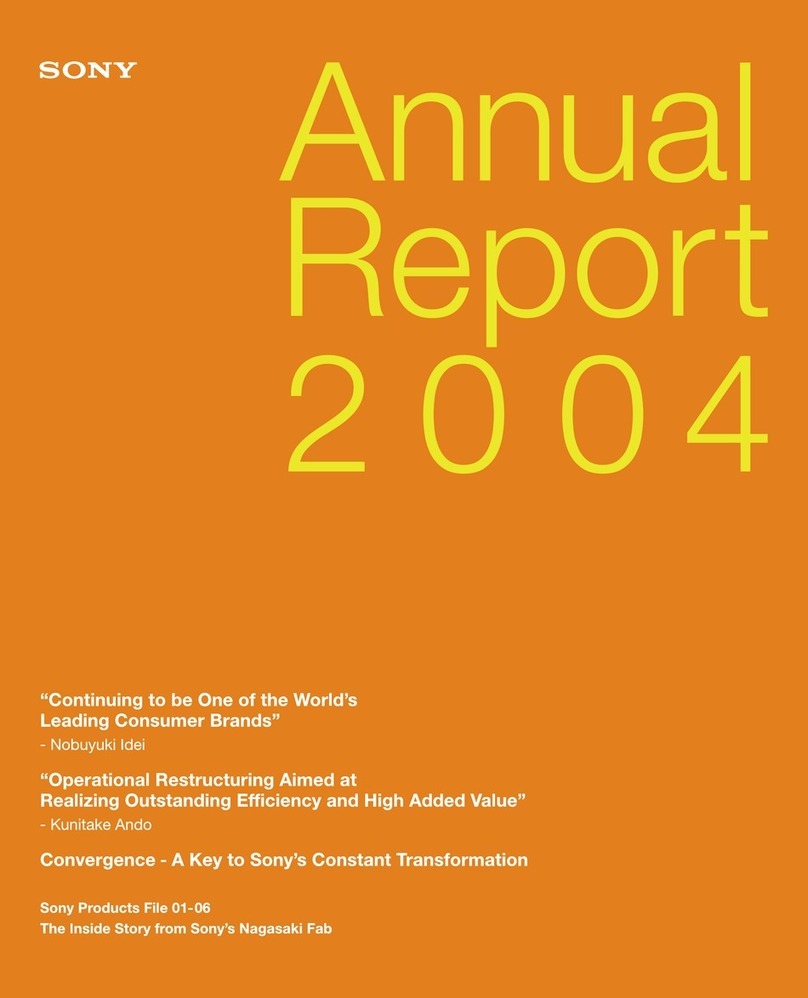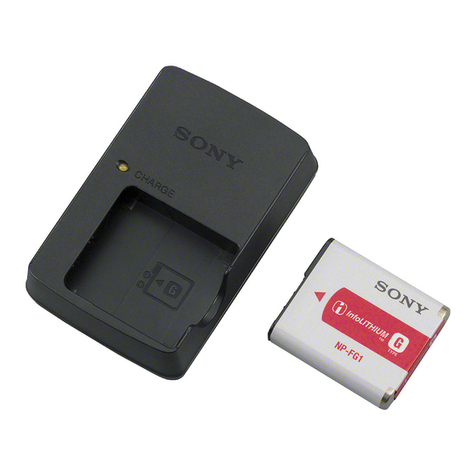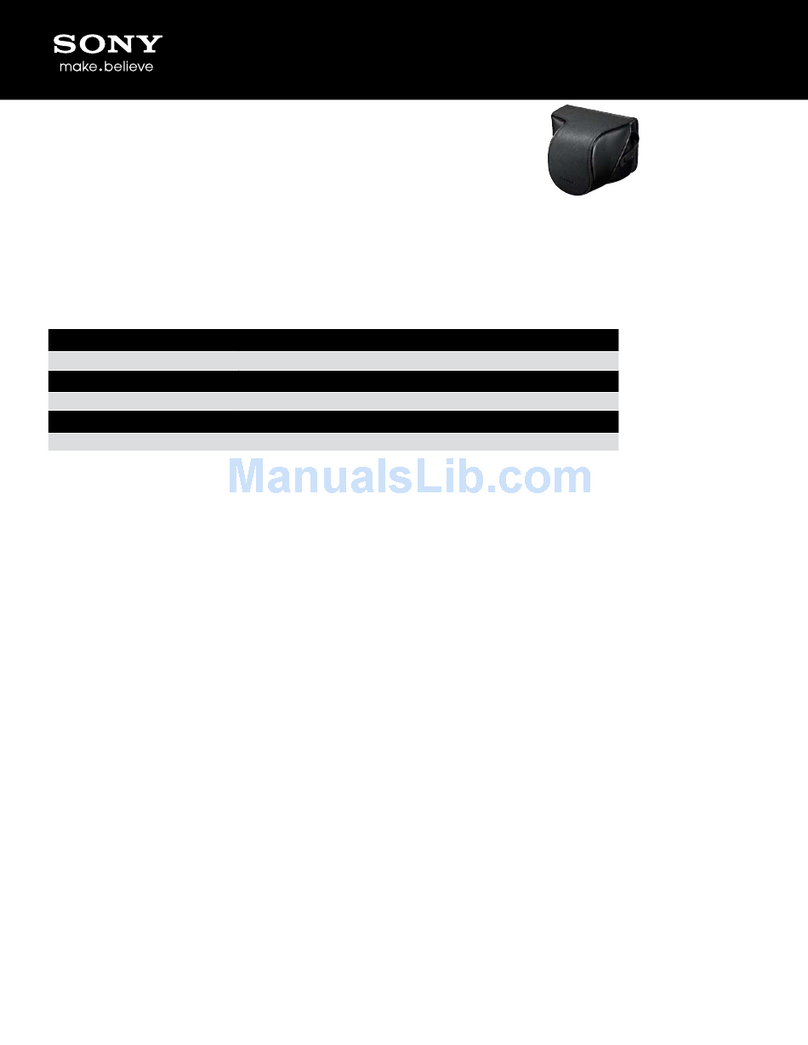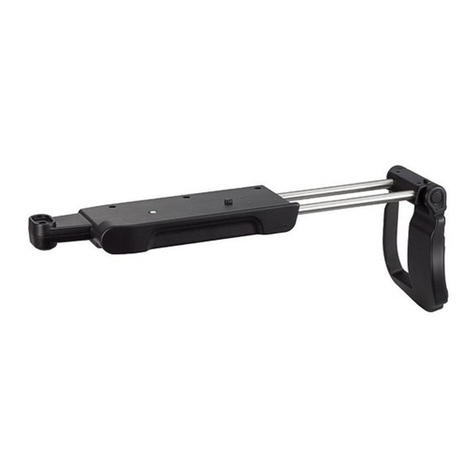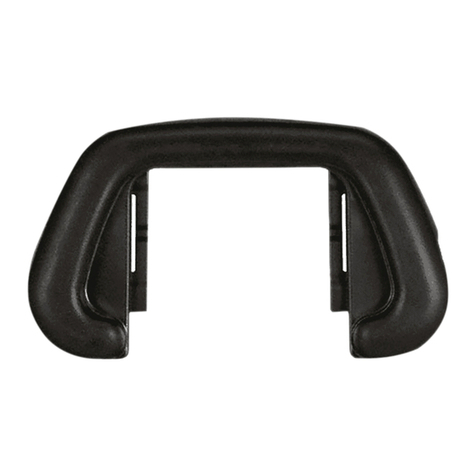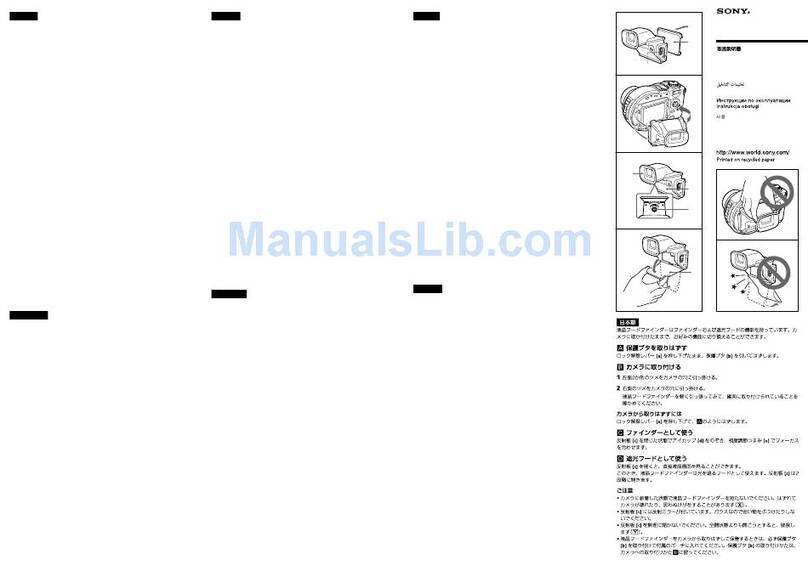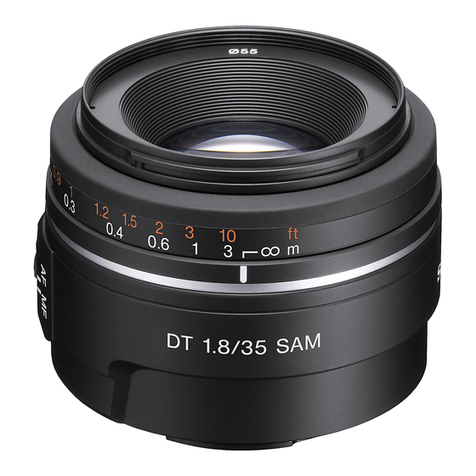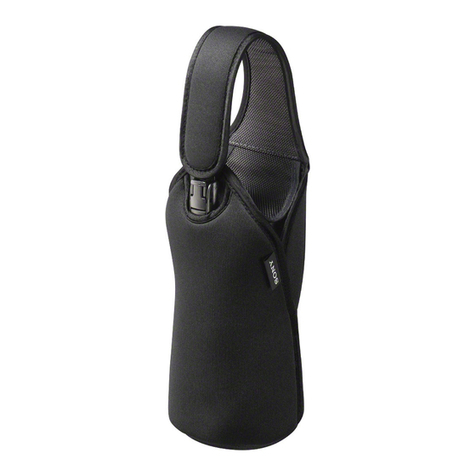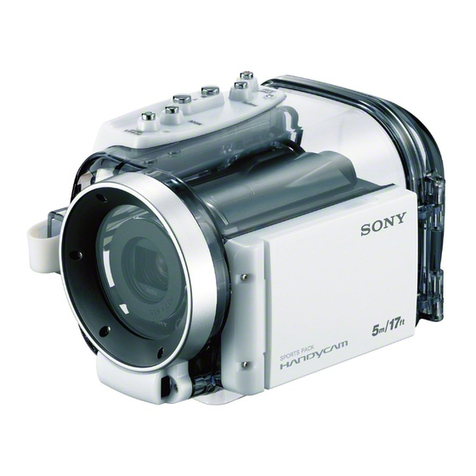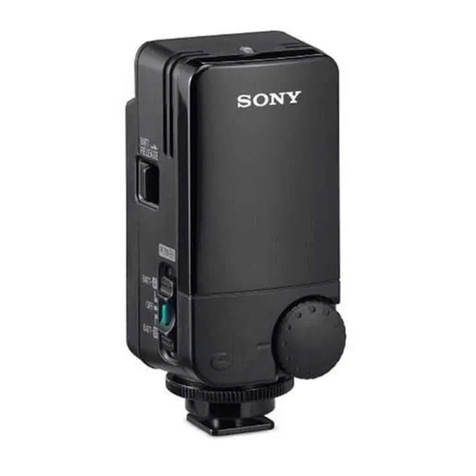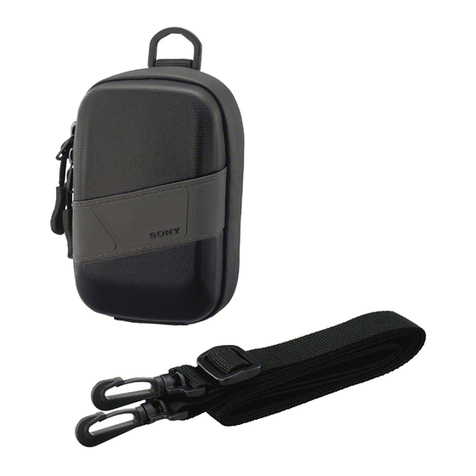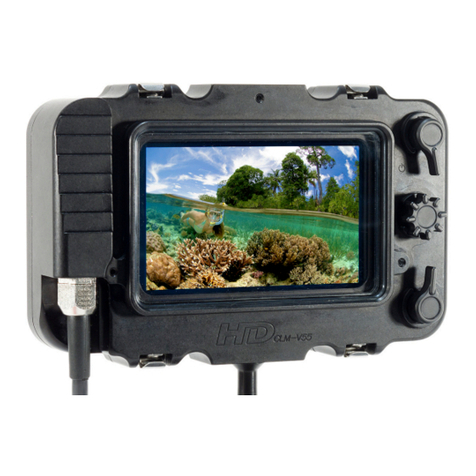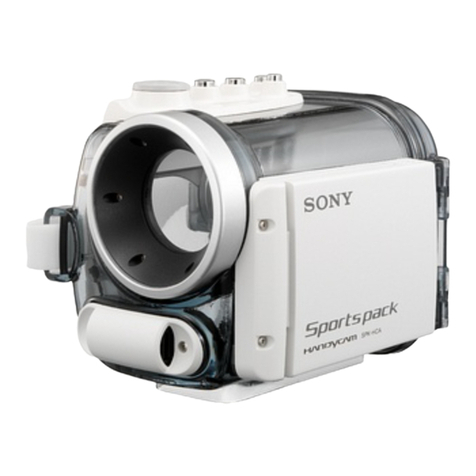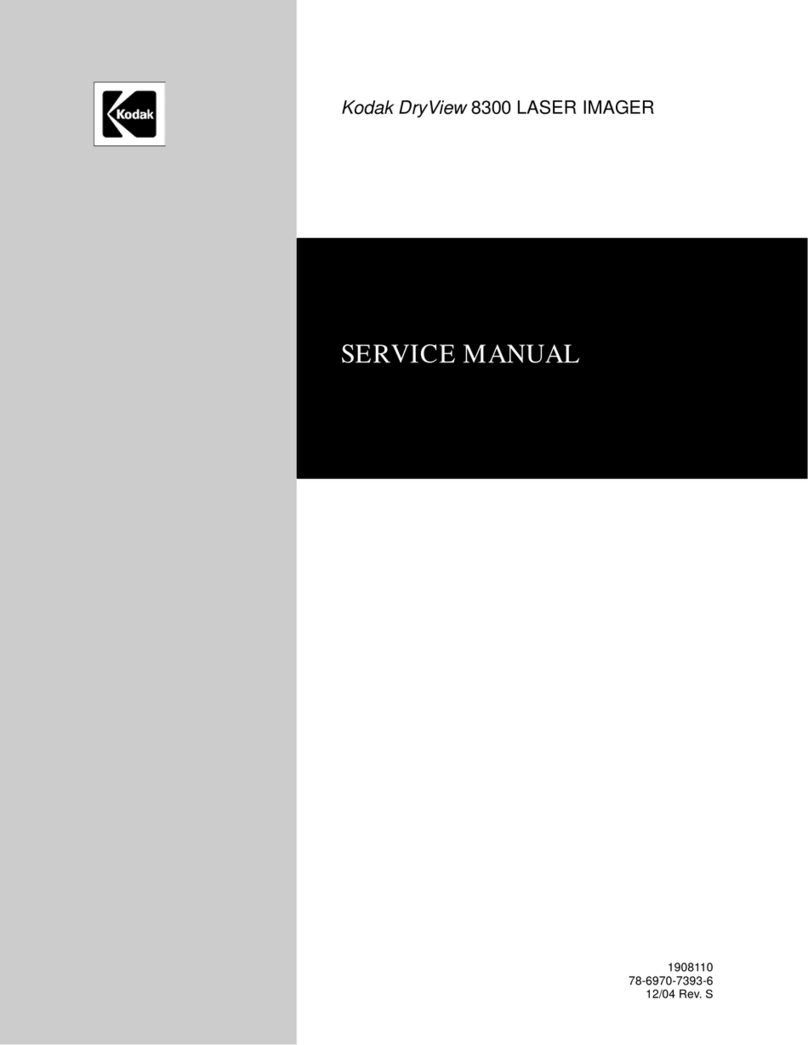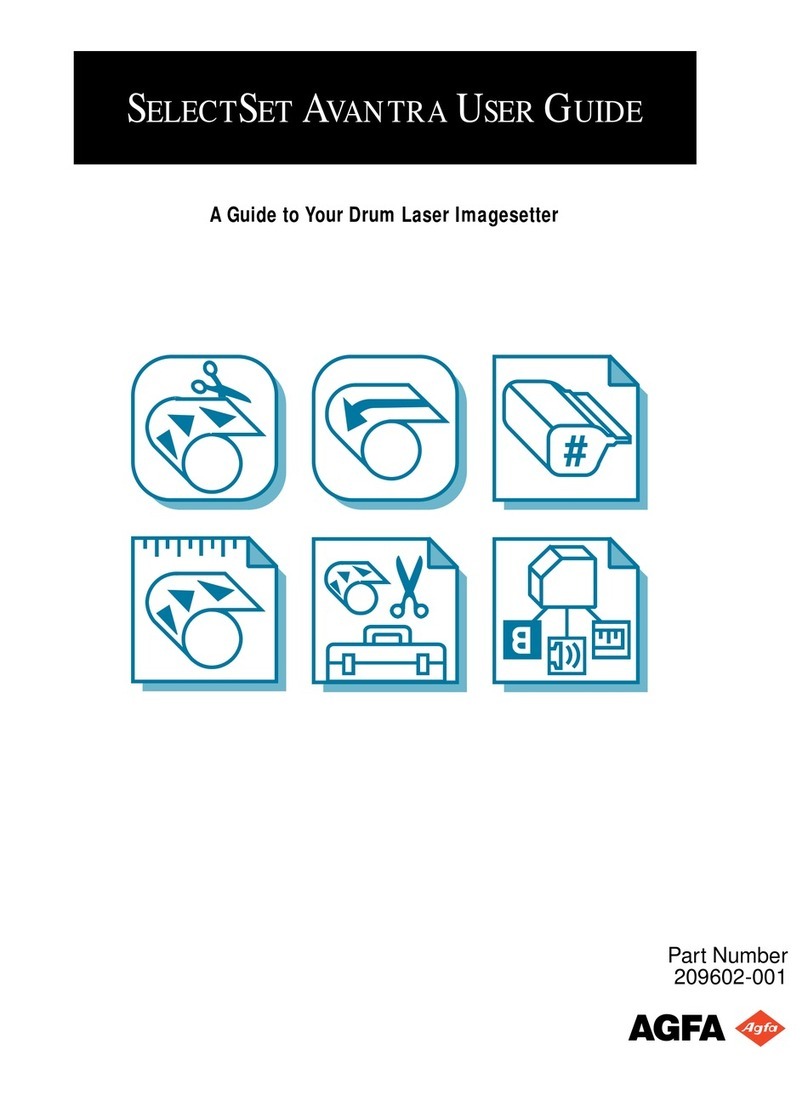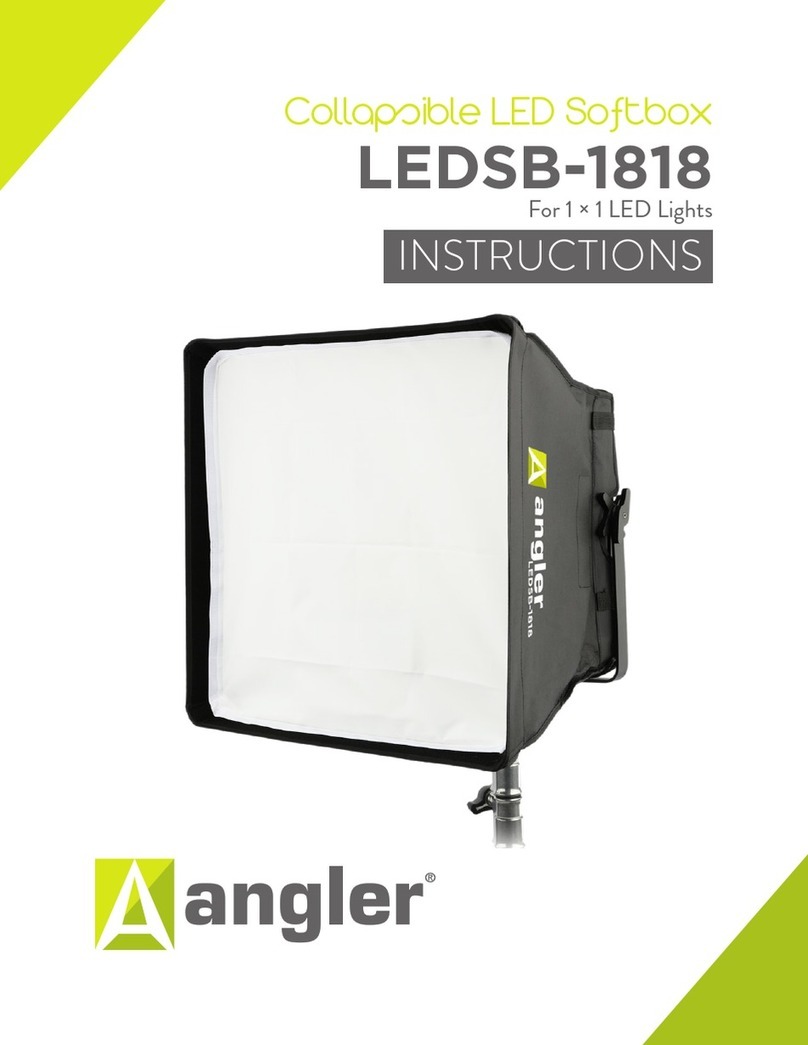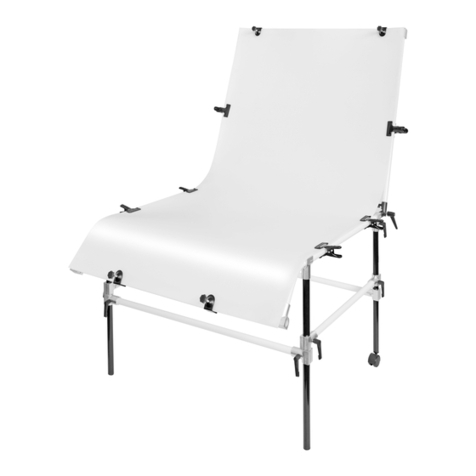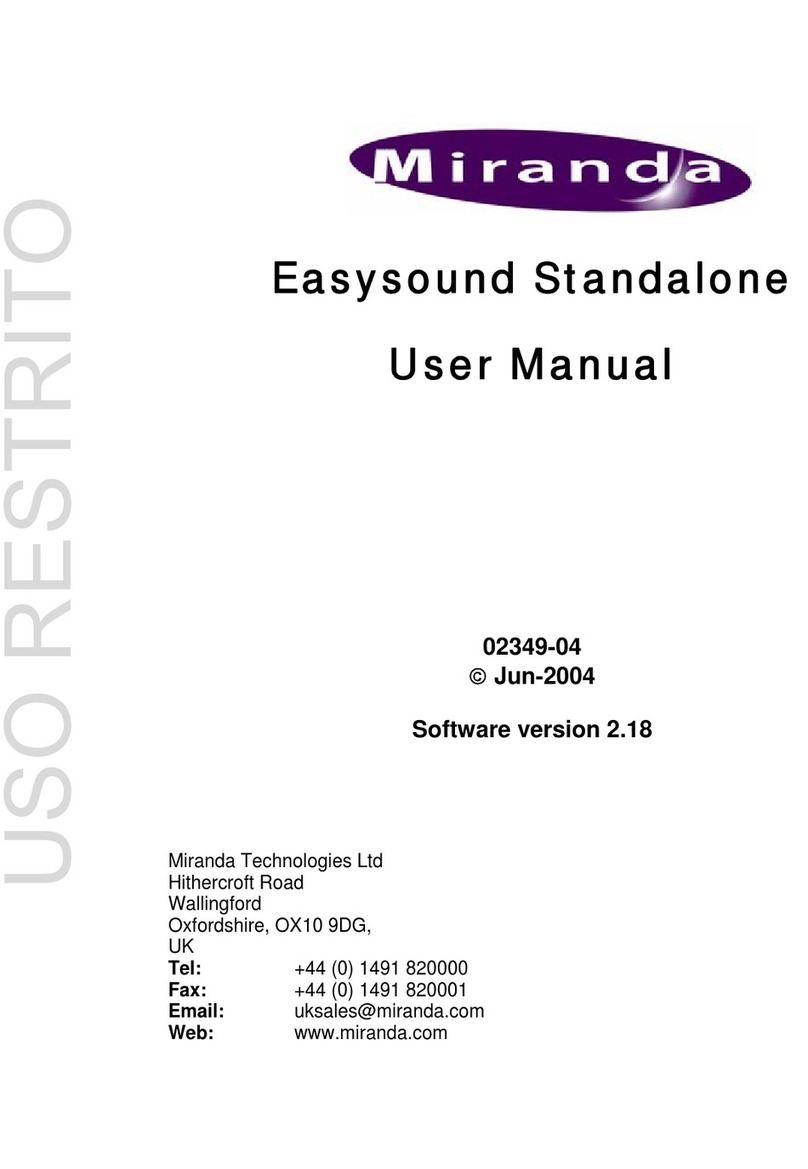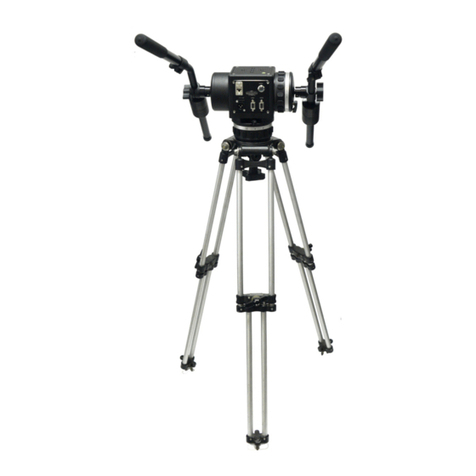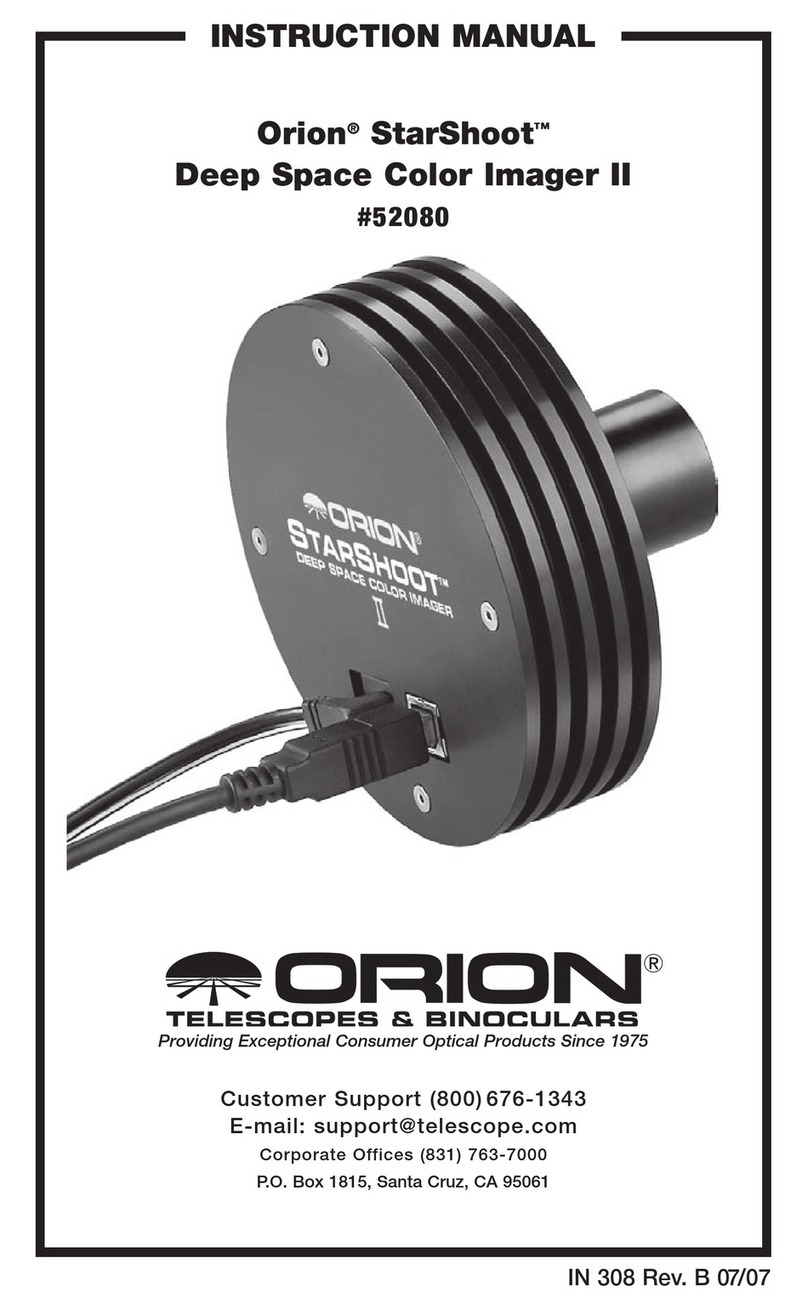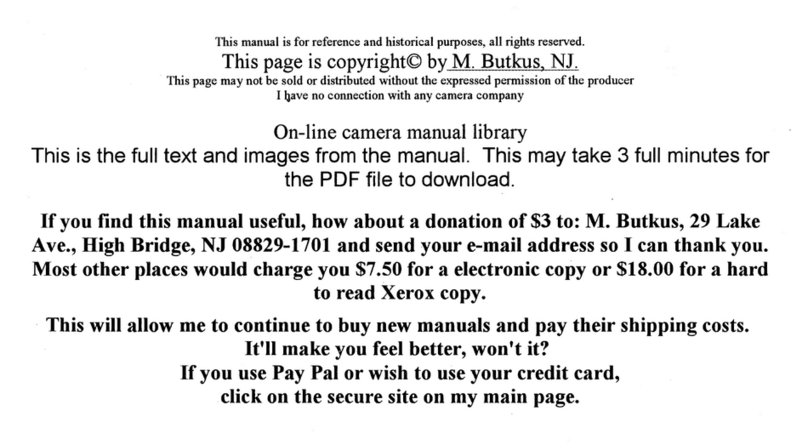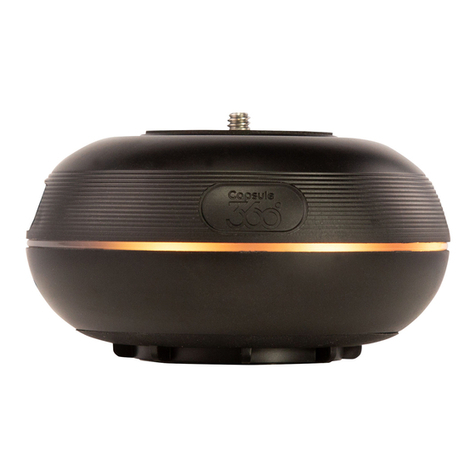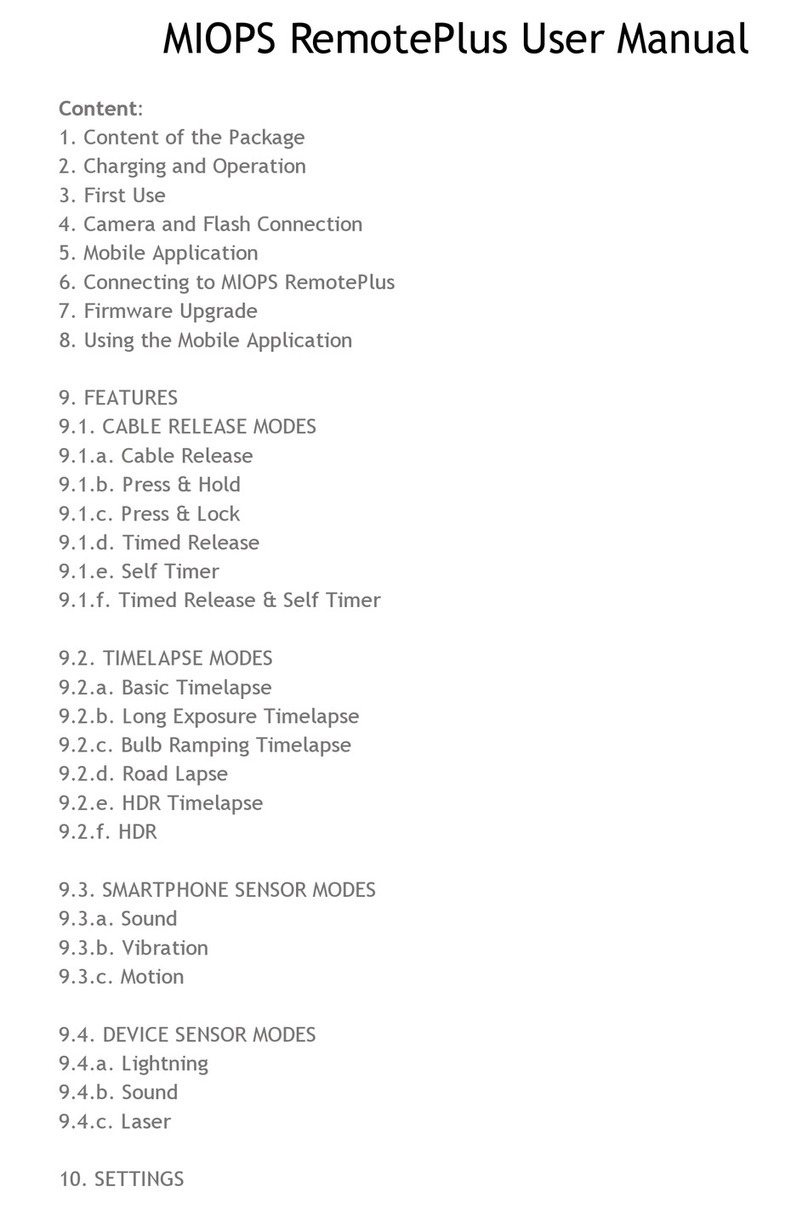Où ne pas poser l’appareil
Ne posez pas cet appareil aux endroits suivants, ni pour la charge ni pour
l’entreposage. Ceci peut entraîner une panne.
À la lumière directe du soleil, comme sur le tableau de bord d’uneˎ
voiture ou à proximité d’un appareil de chauage, car l’appareil peut se
déformer ou tomber en panne.
À un endroit exposé à des vibrations excessivesˎ
À un endroit exposé à un électromagnétisme ou à des radiationsˎ
À un endroit où il y a beaucoup de sableˎ
Au bord de la mer ou sur des sols sableux, où aux endroits où des
nuages de poussière sont fréquents, protégez l’appareil du sable ou de la
poussière. L’appareil risquerait sinon de tomber en panne.
Précautions d’emploi
Insérez bien la batterie rechargeable dans cet appareil avant de laˎ
charger.
La borne de la batterie peut être endommagée si la batterie n’est pasˎ
insérée correctement.
Pour protéger la batterie rechargeable, retirez-la de cet appareil lorsqueˎ
la charge est terminée.
Ne laissez pas tomber ou n’appliquez pas de choc mécanique à cetˎ
appareil.
Gardez cet appareil à l’écart des téléviseurs ou récepteurs AM.ˎ
Placé près d’un téléviseur ou d’un poste de radio, cet appareil peut
causer du bruit.
Débranchez cet appareil de la prise murale après utilisation. Saisissezˎ
cet appareil lorsque vous le débranchez de la prise murale.
Veillez à ne pas mettre d’objets métalliques au contact des piècesˎ
métalliques de cet appareil. Ceci pourrait causer un court-circuit et
endommager l’appareil.
La batterie rechargeable et cet appareil peuvent devenir chauds pendantˎ
ou immédiatement après la charge.
Entretien
Lorsque cet appareil est sale, essuyez-le avec un chion sec et doux.ˎ
Lorsque cet appareil est très sale, essuyez-le avec un chion et un peuˎ
de solvant neutre puis séchez-le.
N’utilisez pas de diluants, benzine, alcool, etc. car ils endommageraientˎ
la surface de cet appareil.
Si vous utilisez un tissu de nettoyage chimique, consultez son modeˎ
d’emploi.
L’emploi d’un solvant volatil, comme un insecticide, ou la mise enˎ
contact direct de cet appareil avec un produit en caoutchouc ou en
plastique pendant une longue période peut détériorer ou endommager
cet appareil.
Pour charger la batterie
rechargeable
La batterie rechargeable se charge lorsqu’elle est insérée dans cet appareil.
* La batterie illustrée est une batterie de série V.
1Insérez la batterie rechargeable.
Alignez le repère de la batterie dans la direction du repère du
chargeur et insérez la batterie de sorte qu’elle s’encliquette. (Voir
l’illustration ).
2Relevez la che d’alimentation, puis branchez-la sur une
prise murale.
Raccordez toujours la che d’alimentation avec les broches orientées
vers le haut (Voir l’illustration ).
Ne raccordez pas la che d’alimentation avec les broches orientées
vers le bas (Voir l’illustration ).
Le témoin CHARGE (orange) s’allume et la recharge commence.
Lorsque le témoin CHARGE s’éteint, la charge normale est terminée
(Charge normale).
Pour une charge complète, qui permet d’utiliser la batterie
rechargeable plus longtemps que la normale, laissez la batterie
rechargeable en place pendant encore une heure environ (Charge
complète).
Pour retirer la batterie rechargeable
Retirez la batterie en la faisant glisser dans le sens opposé de l’insertion.
Temps de charge
Le tableau suivant montre le temps de charge pour une batterie
rechargeable complètement déchargée.
Batterie « InfoLITHIUM » série V
Batterie
rechargeable NP-FV100 NP-FV70 NP-FV50
Temps
de charge
normale 900 490 240
Batterie « InfoLITHIUM » série H
Batterie
rechargeable NP-FH100 NP-FH70 NP-FH50
Temps
de charge
normale 900 410 205
Batterie « InfoLITHIUM » série P
Batterie
rechargeable NP-FP90 NP-FP71 NP-FP50
Temps
de charge
normale 620 410 160
Pour de plus amples informations sur l’autonomie de la batterie,ˎ
reportez-vous au mode d’emploi de votre caméscope.
Le temps de charge peut être diérent selon l’état de la batterieˎ
rechargeable ou la température ambiante.
Les temps indiqués correspondent à la charge d’une batterieˎ
rechargeable vide, usée sur un caméscope, avec cet appareil à une
température ambiante de 25 °C (77 °F).
Température de charge
La température doit se situer entre 0 °C et 40 °C (32 °F à 104 °F) pour
la charge. Pour une ecacité maximale de la batterie, la température
conseillée pour la charge est de 10 °C à 30 °C (50 °F à 86 °F).
Pour utiliser rapidement la batterie rechargeable
Vous pouvez retirer la batterie rechargeable de cet appareil et l’utiliser
même si la charge n’est pas terminée. Cependant, le temps de charge a une
inuence sur l’autonomie de la batterie rechargeable.
Remarques
Si le témoin CHARGE ne s’allume pas, vériez si la batterieˎ
rechargeable est bien insérée dans cet appareil.
Lorsqu’une batterie chargée est installée, le témoin CHARGE s’allumeˎ
une fois puis s’éteint.
Une batterie rechargeable qui n’a pas été utilisée pendant longtempsˎ
peut être plus longue à charger que la normale.
La batterie chargée se décharge graduellement même si elle n’est pasˎ
utilisée. Chargez la batterie rechargeable pour éviter de manquer des
occasions d’enregistrer.
Cet appareil supporte les tensions du monde entier, de 100 V à 240
V. N’utilisez pas un transformateur électronique de tension car ceci
pourrait provoquer un dysfonctionnement.
En cas de problème
Lorsque le témoin CHARGE clignote, vériez les points du tableau
suivant.
Le témoin CHARGE clignote de deux façons.
Clignotement lent : S’allume et s’éteint toutes les 1,5 secondes de façon
répétée.
Clignotement rapide : S’allume et s’éteint toutes les 0,15 secondes de
façon répétée.
La mesure à prendre dépend de la façon dont le témoin CHARGE
clignote.
Lorsque le témoin CHARGE continue de clignoter lentement
La charge est en pause. Cet appareil est en attente.
Si la température de la pièce est hors de la plage de températures
appropriée, la charge s’arrête automatiquement.
Lorsque la température de la pièce revient dans la plage appropriée, le
témoin CHARGE s’allume et la charge redémarre.
Il est conseillé de charger la batterie rechargeable entre 10 °C et 30 °C
(50 °F et 86 °F ).
Merci pour l’achat de ce kit d’accessoires Sony.
Chargeur de batterie (BC-VH1)
Avant d’utiliser ce chargeur de batterie, veuillez lire attentivement ce
manuel et le conserver pour toute référence future.
Aide-mémoire
Les numéros de modèle et de série se situent sous l’appareil. Prendre en
note le numéro de série dans l’espace prévu ci-dessous. Se reporter à ces
numéros lors des communications avec le détaillant Sony au sujet de ce
produit.
Modèle no BC-VH1 No de série
AVERTISSEMENT
An de réduire les risques d’incendie ou de décharge électrique, n’exposez
pas cet appareil à la pluie ou à l’humidité.
N’exposez pas les piles à une chaleur excessive, notamment aux rayons
directs du soleil, à une amme, etc.
Pour réduire les risques d’incendie ou d’électrocution,
1) n’exposez l’appareil à la pluie ou à l’humidité ;
2) ne placez pas d’objets remplis de liquides (vases, etc.) sur l’appareil.
IMPORTANTES
INSTRUCTIONS DE
SECURITE
- CONSERVEZ CES INSTRUCTIONS
DANGER
AFIN DE REDUIRE LE RISQUE
D’INCENDIE OU DE DECHARGE
ELECTRIQUE, SUIVEZ EXACTEMENT
CES INSTRUCTIONS
Pour le brancher sur une source d’alimentation hors des États-Unis,ˋ
utilisez l’adaptateur de che approprié à la conguration de votre prise
électrique, si nécessaire.
Cet appareil peut être installé en position verticale ou horizontale.ˋ
La plaque signalétique indiquant la tension de fonctionnement, la
consommation, etc. se trouve sous l’appareil.
Les batteries pouvant être rechargées pour ce produit sont les
suivantes
Marque Sony
Type de batterie NP-FH50
Valeur nominale
(Capacité typique)
CC 6,8 V
6,1 Wh
(900 mAh)
ATTENTION
Utilisez une prise murale proche lorsque vous utilisez cet appareil.ˎ
Même lorsque le témoin CHARGE de cet appareil est éteint,
l’alimentation n’est pas coupée. Si un problème devait se produire
pendant l’utilisation de cet appareil, débranchez celui-ci de la prise
murale pour le mettre hors tension.
N’utilisez pas cet appareil dans un espace conné, comme entre un murˎ
et un meuble.
PRÉCAUTION
L’appareil n’est pas déconnecté de la source d’alimentation secteur tant
qu’il reste branché sur la prise murale, même s’il a été mis hors tension.
AVIS À LA CLIENTÈLE AUX ÉTATS-UNIS
AVERTISSEMENT
Par la présente, vous êtes avisé du fait que tout changement ou toute
modication ne faisant pas l’objet d’une autorisation expresse dans le
présent manuel pourrait annuler votre droit d’utiliser l’appareil.
Note
L’appareil a été testé et est conforme aux exigences d’un appareil
numérique de Classe B, conformément à la Partie 15 de la réglementation
de la FCC.
Ces critères sont conçus pour fournir une protection raisonnable contre
les interférences nuisibles dans un environnement résidentiel. L’appareil
génère, utilise et peut émettre des fréquences radio; s’il n’est pas installé
et utilisé conformément aux instructions, il pourrait provoquer des
interférences nuisibles aux communications radio. Cependant, il n’est
pas possible de garantir que des interférences ne seront pas provoquées
dans certaines conditions particulières. Si l’appareil devait provoquer des
interférences nuisibles à la réception radio ou à la télévision, ce qui peut
être démontré en allumant et éteignant l’appareil, il est recommandé à
l’utilisateur d’essayer de corriger cette situation par l’une ou l’autre des
mesures suivantes :
Réorienter ou déplacer l’antenne réceptrice.ˋ
Augmenter la distance entre l’appareil et le récepteur.ˋ
Brancher l’appareil dans une prise ou sur un circuit diérent de celuiˋ
sur lequel le récepteur est branché.
Consulter le détaillant ou un technicien expérimenté en radio/ˋ
téléviseurs.
Remarques concernant l’emploi
Cet appareil n’est pas étanche à la poussière, aux éclaboussures
d’eau ou à l’eau.
Garantie concernant les enregistrements
L’utilisateur ne pourra pas être dédommagé pour une absence
d’enregistrement ou de lecture due à une défectuosité de la batterie, du
chargeur de batterie, ou autre.
Le chargeur de batterie BC-VH1 ne peut être utilisé que pour chargerˎ
les batteries « InfoLITHIUM » (série V, série H et série P).
Les batteries « InfoLITHIUM » (série V, série H et série P) portentˎ
respectivement les marques , et .
Cet appareil ne peut pas être utilisé pour charger une batterieˎ
rechargeable nickel-cadmium ou nickel-hydrure métallique.
« InfoLITHIUM » est une marque commerciale de Sony Corporation.ˎ
Lorsque le témoin CHARGE continue de clignoter rapidement
La première fois que vous chargez la batterie dans une des situations
suivantes, le témoin CHARGE peut clignoter rapidement.
Dans ce cas, retirez la batterie de cet appareil puis réinsérez-la et
chargez-la de nouveau.
Si la batterie est restée longtemps inutilisée
Si la batterie est restée longtemps dans l’appareil photo
Immédiatement après l’achat
Si le témoin CHARGE continue de clignoter rapidement, vériez les
points du tableau suivant.
